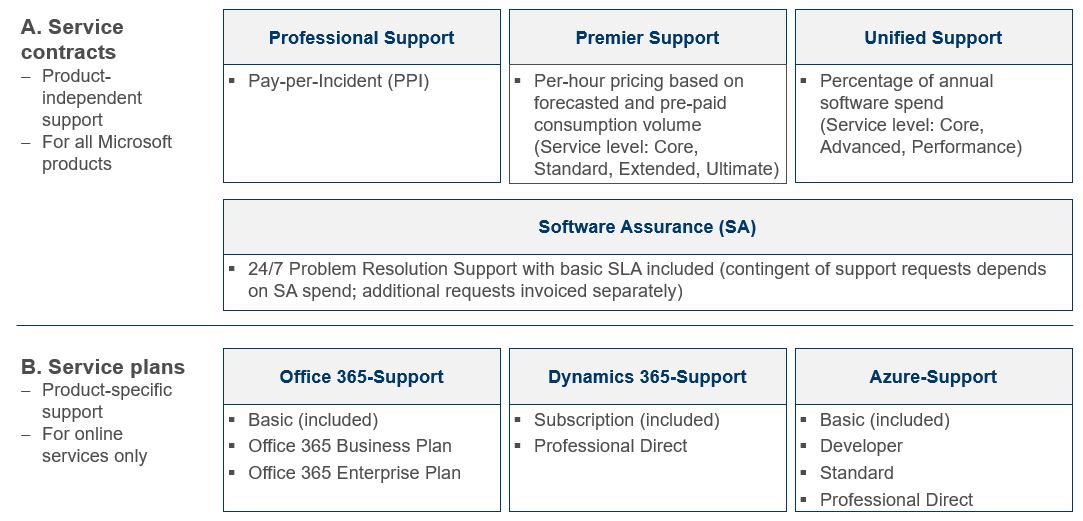
Microsoft Professional Support Services – is it all coming down to Unified Support?
When it comes to software usage, support costs are the third major cost pool for companies, in addition to license and maintenance fees. Especially for software products that are used throughout the company and are business-critical, good support is crucial to keep downtimes as low as possible.
Microsoft offers product-independent as well as product-specific support contracts. You can find an overview in our chart:

Here we look at the changes to product-independent service contracts. Since the introduction of Microsoft Unified Support, there has been increasing pressure on Microsoft customers to subscribe to this service.
How has Microsoft limited the offering of product-independent support contracts?
1. Premier Support
As of July 1, 2021, Microsoft has already stopped offering Premier Support contracts to new customers. As of July 1, 2022, it will now also no longer be possible to renew contracts for existing enterprise customers. Microsoft also announced that it will probably phase out Premier Support for public sector customers as well.
2. Software Assurance
In April 2022, Microsoft announced that it would discontinue the 24x7 Problem Resolution Support Benefit completely, for all customers, on February 1, 2023. This is a reversal of Microsoft's previous announcements to replace 24x7 Problem Resolution Support for customers with Software Assurance spend of more than $250,000 annually with on-demand support with a 24-hour response time.
What are the consequences for customers switching to Microsoft Unified Support?
Above all, it will be more expensive for most customers and at the same time more difficult to calculate the costs. With both Premier and Professional Support, it is possible to get a good overview of costs, as billing here is done per incident or per hour. The cost of Unified Support, on the other hand, is calculated based on the customer's annual spending on license fees and software maintenance.
At the end of last year, Microsoft again adjusted the pricing model for Unified Support. For Unified Enterprise, Microsoft has published a pricing overview. Pricing is based on historical annual IT spend by product class, consisting of:
- Cloud services (previous 12 months purchases)
- License purchases (previous 5 years purchases)
- Software Assurance purchases (previous 12 months purchases)
The price for Unified Support is then calculated as a percentage markup. Rates are graduated based on the corresponding revenue.
Things to consider when thinking about switching to or renewing a Unified Support contract are two key factors that potentially increase your costs significantly from year to year:
- Any increase in your use of Microsoft Cloud services will also result in an increase in Unified Support costs in the following year, as this product class is a key variable in the Unified cost metric.
- Additionally, any price increase for products used will directly impact Unified Support costs. Thus, price increases such as the recent one in March for Microsoft 365 then hit enterprise customers twice.
Even if the pressure on customers to switch to unified support is growing, IT decision-makers should carry out a precise analysis of the individually required support scope and the cost implications in advance.
We would be happy to support you in evaluating the impact of the changes on your company and to check for you which alternatives to Unified Support are possible for your company.
Author: Anne Pinke